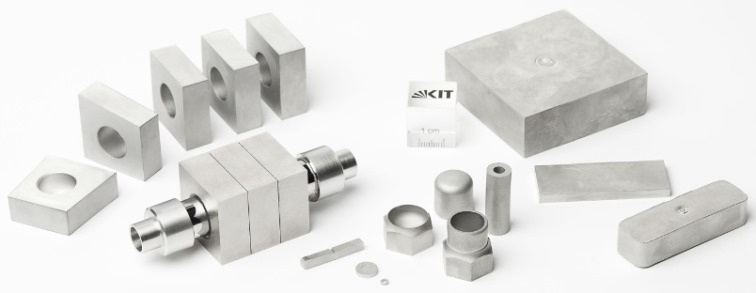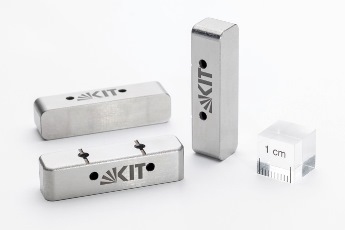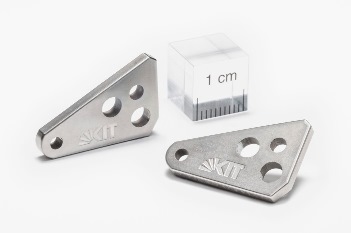A new manufacturing method for DEMO Divertor components
Tungsten is the material of first choice for the reactor wall surface of the ITER follow-up DEMO. Especially the divertor, at which plasma impurities and ashes have to be removed from the fusion process, is exposed to extreme heat and particle fluxes. As a refractory metal, tungsten resists these high thermal stresses, but it is very expensive and time-consuming to manufacture using conventional production methods.
Powder injection molding represents an alternative to conventional manufacturing. In this process, tungsten-metal powder mixed with a binder system is pressed under high pressure (up to 200 MPa) into the desired form (cavity). After removing the binder system and the subsequent sintering process, there is no need for further finishing work on the resulting near-net-shape components. The powder injection molding process for tungsten is therefore a cost-effective mass production method for manufacturing high-precision tungsten components on an industrial scale.
In the past five years, scientists at KIT IAM-WK successfully established the powder injection molding process for tungsten. The components produced range from a micro-gear wheel with a diameter of 3 mm and a weight of 0.050 g to a 1.4 kg plate with a size of 60 x 60 x 20 mm. However, it was not only the suitability of the process for tungsten that was demonstrated, also the scalability and ability to manufacture complex components with high precision. Another major advantage of the powder injection molded tungsten parts are the isotropic material properties. Conventional plates or rods produced by means of milling or turning do not have such uniaxial grain orientations and therefore cannot be used flexibly.
|
Different tungsten components produced by powder injection molding (Photo: KIT, Tanja Meißner) |
An ideal instrument for the development of new materials and as a joining technique
The injection molding process is suitable for the development of new tungsten materials such as tungsten doped with titanium carbide or yttrium oxide, as well as for joining tungsten materials. Conventional joining techniques, like soldering, are replaced by the more cost-effective multi-component tungsten powder injection molding developed by KIT.
Most encouraging test results
The tungsten components manufactured at KIT were tested in the Jülich electron beam facility JUDITH-1 using thermal shock tests and thermo-mechanical fatigue. The results obtained are highly encouraging. Subsequent studies on plasma-wall interactions are planned. The divertor components produced by tungsten powder injection molding are to be tested in ASDEX Upgrade and in the GLADIS facility of IPP Garching. The injection molding process is very flexible for new designs and shapes of components. Tungsten components produced in this way, such as the Langmuir probes for the instrument samples and the monoblocks assembled to form a divertor mockup, are tested in the WEST fusion experiment.
|
Test samples for ASDEX Upgrade (Photo: KIT, Tanja Meißner) |
Langmuir probes for WEST (Photo: KIT, Tanja Meißner) |
Information and contact:
Dr. Steffen Antusch, KIT, steffen.antusch∂kit.edu
Press:
At the end of April 2016, 70 Langmuir probes produced by KIT were delivered to the Institute for Magnetic Fusion Research of the CEA in Cadarache, Southern France, within the scope of the WEST project and have been installed in the meantime.
After four years of reconstruction, the vacuum vessel was closed on 22.11.2016 at 10 am and the vacuum pumps were started.



